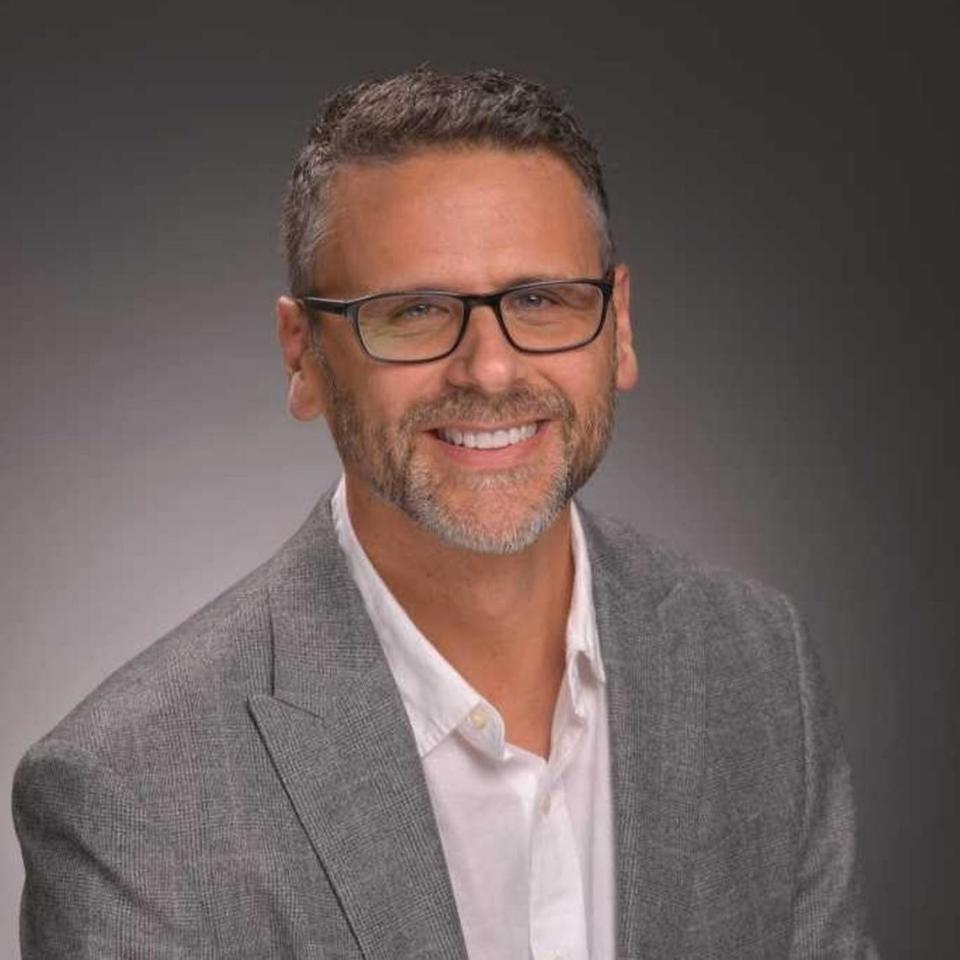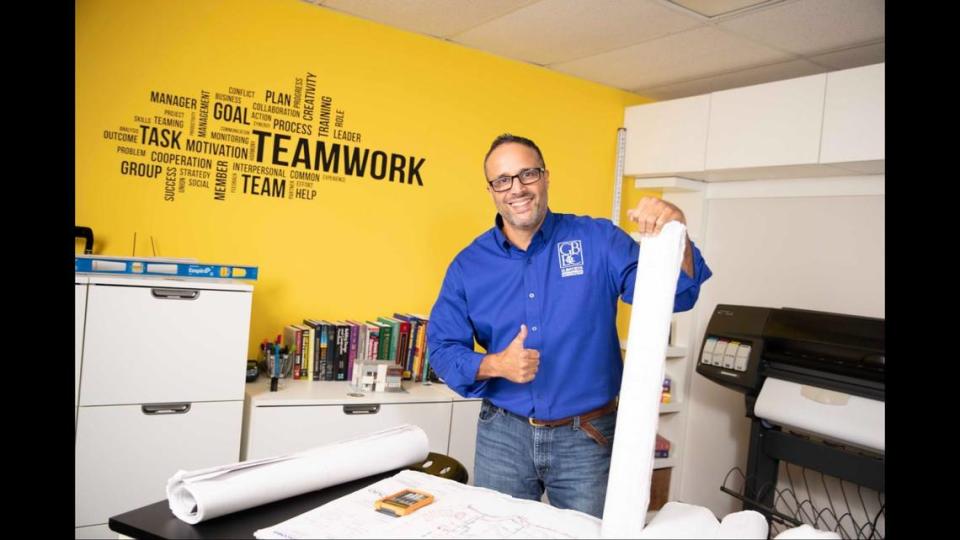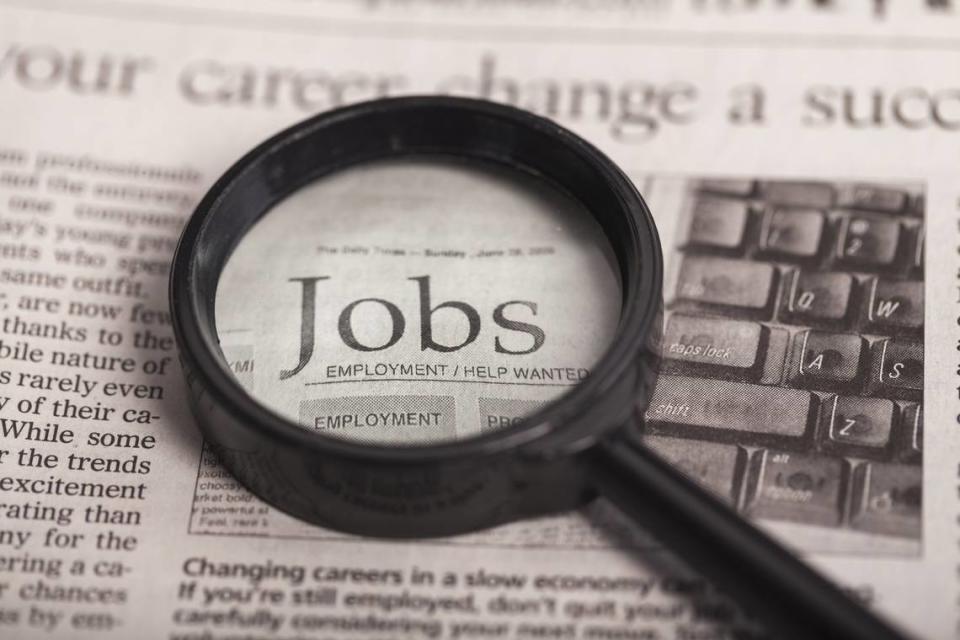Florida has ‘Help Wanted’ hanging on it. Economist says labor shortage is here to stay
“We’re hiring” banners hang above grocery stories in nearly every community in Florida. “Help wanted” signs are taped to storefronts and posted on hundreds of online job boards. Florida’s unemployment rate is nearing a record low, even as the state population grows.
“Get used to it,” said Ron Hetrick, who lives in St. John’s County, south of Jacksonville. He’s a senior labor economist at labor market analytics firm Lightcast.
This is Florida’s new normal, and the results will translate into competitive wages, longer waits for professional and domestic services, and higher costs of living — for everyone.
Florida is unlike many other states because of its fast growth, aging population and dependence on migrants for both skilled and unskilled labor, Hetrick said. But a beefed-up state law that attempts to crack down on undocumented labor is exacerbating the deep hole in the work force that may take years to close.
“What makes Florida unique is that people are moving from all over the country, but the unemployment rate is not going up — it’s going down or holding a low level,’’ Hetrick said.
READ MORE: Want a job that pays up to $28 an hour? Amazon is hiring in Florida. Here’s how to apply
According to the Florida Chamber of Commerce, which is updating its 2021 “Workforce Needs Study,” 73% of job creators surveyed in Florida reported challenges in recruiting qualified candidates, and more than 58% reported they anticipate a need for training and “up-skilling” current employees.
Hardest hit are industries such as construction, restaurants, hotels, roofing, landscaping and agriculture, which traditionally have relied on both legal and illegal migrant workers. They have hit a new hurdle with Gov. Ron DeSantis’ recent crackdown on undocumented workers in Florida.
At DeSantis’ urging, legislators passed a package of immigration related measures this year that attempt to keep undocumented immigrants from coming into the state and make it more difficult for those living here to stay.

Dependence on migrant labor
Greg Batista, founder and owner of G. Batista Engineering & Construction, has seen the effect of the new laws first hand. He specializes in condo development in Miami-Dade and Broward counties and employs about 50 people.
“The immediate impact is that we’ve got four or five ongoing construction jobs at this moment and fewer people to do the jobs,’’ he said. “The job that you told the owner was going to take five months is now going to take 10 months.”
He attributed much of the problem to the exodus of construction workers from Florida.
“They’re just picking up and leaving to a state where they’re more friendly towards migrants, where they don’t have to be looking over their shoulder every 10 seconds and saying, ‘Look, I’m going have to go to be deported, going to go to jail, or I’m going to be fined,’ ’’ he said.

According to a 2021 analysis of U.S. Census data by the policy research and polling firm KFF, undocumented workers in Florida made up 11% of the state’s workforce, including 37% of all agriculture workers, 23% of construction workers, 14% of service workers, and 14% of transportation workers.
In Miami-Dade County, the number of all immigrants, legal and undocumented, are even higher: 65% of the county’s employed labor force are immigrants, according to the county’s Office of cq New Americans.
According to a survey of 25 Florida construction companies in 2023 by The Associated General Contractor of America and Autodesk, nearly all the surveyed companies were having difficulty filling some or all craft and salaried positions.
Eighty percent of companies reported having to increase base pay rates, 65% reported delays due to shortage of workers, and 68% said they expected to add new employees over the next 12 months.
Jeff Lozama, CEO of Miami-based glazing contractor CMS Group, said his staff is made up of immigrants and, without them, the construction industry in Florida could not continue at its current pace.
“They often take on jobs that are physically demanding and require skills in jobs that most Americans are not willing to take on,’’ he told an audience during the Miami Opportunity Summit in August.
Lozama recounted his company’s experiences at a recent job fair in Liberty Square, a predominantly Black community with a small immigrant population.
“We had a poor showing. It was really horrible. No one showed up,’’ he said. They also participated in a similar job fair in North Miami, home to a large Haitian population.
“There were busloads of immigrants that showed up,’’ Lozama said. “... It just tells you how important that immigrant population is.”
Many professions in Florida are heavily dependent on legal immigrants, such as nurses coming to Florida from the Philippines. The state’s agricultural industry depends on H2-A workers, a federal visa program that farmers use to bring temporary workers that harvest crops.
“People aren’t fully aware of just how dependent our labor force growth is on immigration,” Hetrick said. “A lot of our homes, a lot of our foods that we’re eating are because of immigration right now.”
Enforcement crackdown
Florida’s strengthened immigration laws increase the penalties for anyone who transports an undocumented migrant into the state, require hospitals that accept Medicaid to ask patients about their immigration status and require employers with 25 or more workers to check whether new hires are allowed to work in the country by using the federal E-verify program.
There is little evidence that the laws have produced many arrests, but they have had a chilling effect on available workers.
Farmers are scrambling to find workers for the fall and winter harvest season. Restaurants, hotels and construction industries are also straining.
Rep. Rick Roth, a Belle Glade vegetable farmer and one of the Republican legislators who supported the laws strengthening immigration enforcement, said many Florida farmers are relying on a loophole in the law that allows seasonal workers who were employed last season to come back without having their immigration status checked.
“The good news is, we’re hearing pretty much from the industry that if you had a seasonal workforce back in April and May and you told them to come back in November, that’s not going to be a problem,’’ he said. “They’ll come back and we’ll get to treat them as returning workforce. They’re not new employees who would have to go through E-verify.”
Roth acknowledged, however, that the law has added to a labor shortage years in the making. “Absolutely,’’ it’s having an impact, he said. “The difficulty is measuring the problem.”

Florida’s retiree dilemma
As Florida has grown, so has its labor force — just not fast enough to meet the demand.
In 2008, before the Great Recession, the state’s unemployment rate was 2.4% and the labor force was about 9 million people. In 2023, the unemployment rate is 2.6% and there are 11 million people in the workforce. By comparison, the national unemployment rate is 3.8%
According to the U.S. Bureau of Labor Statistics’ Job Openings and Labor Turnover Survey, there were 552,000 job openings in Florida in July, the last month with data.
The dilemma now facing Florida, Hetrick said, is whether to continue to encourage population growth when that growth is not producing workers to match the demand, or tamp down expansion to allow the labor force to catch up and costs to stabilize.
Remote workers are coming to the Sunshine State bringing jobs with them, new residents quickly find something once they arrive, or retirees are coming with demands for services but aren’t working while they’re here, he explained.
“The reality is, to get somebody to fill your job, you’re gonna have to unseat them from an existing job,’’ he said.
Retirees entering Florida “used to be a good thing, but it’s not anymore,’’ he said. “Because you cannot have people who put demand on an economy but who don’t contribute to the supply of an economy.”
Former Gov. Rick Scott used his “Let’s Get to Work” mantra to activate Baby Boomers and get elected in Florida.
But, now job creation absent a steady stream of new workers is “the worst thing you could possibly do,’’ Hetrick said, “because your existing employers are dying and they need workers.”
Legal immigration slowdown
Part of the pressure of the influx of migrants on the U.S.-Mexico border is happening because consulates shut down and stopped processing visas during the pandemic, Hetrick said.
He tells governors and other elected officials with whom he consults across the country, that “instead of focusing so much attention on talking about what we should not be doing, let’s focus on what we should be doing: Creating faster visa processing, getting companies involved in sponsorships” and expanding the federal temporary worker programs of H2-A and H2-B.
“You would see a lot more people pursuing the legal route if they knew something would happen in two or three months, rather than two or three years,’’ he said.
Getting creative
Batista, the Davie construction and engineering company owner, said the market has forced him to “get creative.” In August, he went on a recruiting mission to a large engineering conference in Puerto Rico, an American territory, where he hoped to recruit U.S. citizens and avoid immigration paperwork.
He was prepared to pay to relocate structural engineers to have them move to Florida to help fill the need for people to certify inspections to meet Florida’s new condominium safety laws, he said.
But, he discovered, Puerto Rico continues to rebuild after Hurricane Maria, “everyone is looking for structural engineers” and none of the prospective candidates wanted to move to South Florida.
“I thought the trip to Puerto Rico was going to be more fruitful and it hasn’t been,’’ Batista said. “I don’t know what else to do. If people aren’t there, they aren’t there.”
Mary Ellen Klas can be reached at meklas@miamiherald.com and @MaryEllenKlas

